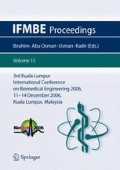Abstract
Previous studies have shown that repetitive transcranial magnetic stimulation (rTMS) can modify cortical excitability in humans, and particularly that a recentlyproposed rTMS protocol, “theta burst stimulation” (TBS) can induce the long-lasting effects with the stimulation duration much shorter than those of conventional rTMS protocols. However, in those studies, the effects of rTMS were assessed mainly by means of motor evoked potential, and how the rTMS affects functional coupling between cortex and muscle was least studied. Here, we examined the coherence between electroencephalographic (EEG) and electromyographic (EMG) signals during isometric hand (first dorsal interosseous muscle) contraction, before and after application of TBS to primary motor area (PMA). Magnitude of the EEG-EMG coherence at beta band (13–30Hz), localizing for the C3 scalp site, significantly decreased 30–60 minutes after TBS and, in 90–120 minutes, gradually recovered to the control level before TBS. The present results suggested that TBS applied to PMA can suppress the cortico-muscular synchronization.
Access this chapter
Tax calculation will be finalised at checkout
Purchases are for personal use only
Preview
Unable to display preview. Download preview PDF.
References
Rothwell JC (1997) Techniques and mechanisms of action of transcranial stimulation of the human motor cortex. J. Neurosci. Methods 74(2), 113–122.
Mima T, Hallett M (1999) Corticomuscular coherence: a review J. Clin Neurophysiol., 16(6), 501–511.
Mima T, Hallett M. (1999) Electroencephalographic analysis of cortico-muscular coherence: reference effect, volume conduction and generator mechanism. Clin Neurophysiol., 11, 1892–1899.
Salenius S, Portin K, Kajola M et al. (1997) Cortical control of human motoneuron firing during isometric contraction. J. Neurophysiol. 77(6), 3401–3405.
Todd G, Flavel S C, Ridding M.C. (2006) Low intensity repetitive transcranial magnetic stimulation decreases motor cortical excitability in humans, J. Appl. Physiol. In press.
Safri N M, Murayama N, Igasaki T et al. (2006) Effects of visual stimulation on cortico-spinal coherence during isometric hand contraction in humans. Int. J. Psychophysiol. 61(2), 288–293.
Chen W H, Mima T et al. (2003) Low-frequency rTMS over lateral premotor cortex induces lasting changes in regional activation and functional coupling of cortical motor areas. Clin. Neurophysiol., 114(9), 1628–1637.
Matsunaga K, Maruyama A, Fujiwara T et al. (2005) Increased corticospinal excitability after 5 Hz rTMS over the human supplementary motor area. J. Physiol. 562(1), 295–306.
Oliviero A, Strens L H A., Lazarro V et al. (2003) Persistent effects of high frequency repetitive TMS on the coupling between motor areas in the human, Exp. Brain Res., 149, 107–113.
Rizzo V, Siebner H R, Modugno N et al.(2004) Shaping the excitability of human motor cortex with premotor rTMS. J. Physiol. 554(2),483–495
Huang Y Z, Edwards M J, Rounis E et al. (2005) Theta Burst Stimulation of the Human Motor Cortex, Neuron, 45,201–206.
Murayama N, Lin YY, Salenius S, Hari R et al. (2001) Oscillatory interaction between human motor cortex and trunk muscles during isometric contraction. Neuroimage, 14, 1206–1213.
Conway B.A., Halliday D.M., Farmer S.F., Shahani U., Maas P., Weir A.I., Rosenberg J.R. (1995) Synchronization between motor cortex and spinal motoneuronal pool during the performance of a maintained motor task in man. J. Physiol. 489(3), 917–924.
Safri N.M., Tanaka M., Murayama N., Igasaki T.(2004) The influence of visual stimuli on cortico-muscular synchronization during isometric contraction in human., Kuala Lumpur International IFMBE Proc.2004, 7, 149–152
Author information
Authors and Affiliations
Editor information
Editors and Affiliations
Rights and permissions
Copyright information
© 2007 Springer-Verlag Berlin Heidelberg
About this paper
Cite this paper
Saglam, M. et al. (2007). Theta Burst Transcranial Magnetic Stimulation Can Modify Cortico-Muscular Coherence in Humans. In: Ibrahim, F., Osman, N.A.A., Usman, J., Kadri, N.A. (eds) 3rd Kuala Lumpur International Conference on Biomedical Engineering 2006. IFMBE Proceedings, vol 15. Springer, Berlin, Heidelberg. https://doi.org/10.1007/978-3-540-68017-8_23
Download citation
DOI: https://doi.org/10.1007/978-3-540-68017-8_23
Publisher Name: Springer, Berlin, Heidelberg
Print ISBN: 978-3-540-68016-1
Online ISBN: 978-3-540-68017-8
eBook Packages: EngineeringEngineering (R0)

